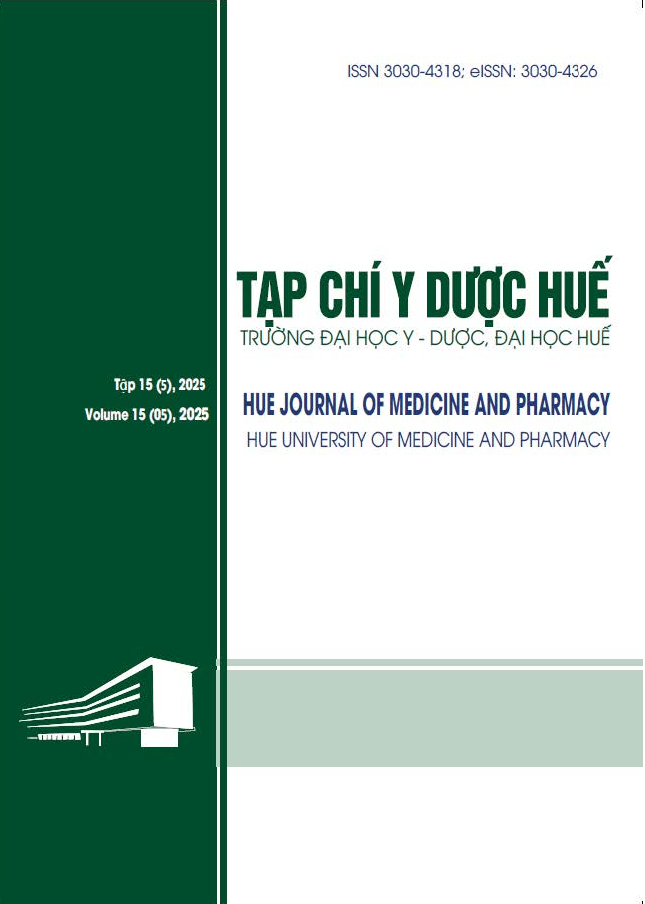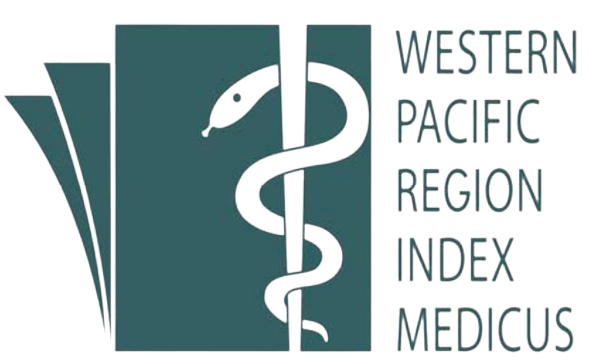Abstract
Background: Sepsis is a life-threatening condition of organ dysfunction caused by a dysregulated host response to infection. If not promptly recognized and managed, it can rapidly progress to septic shock, multiple organ failure, and death. To improve diagnostic and therapeutic effectiveness, we conducted a clinical epidemiological study on adult sepsis at Hue Central Hospital, aiming to describe the clinical and epidemiological characteristics, causative pathogens, and treatment outcomes of patients with sepsis at the hospital.
Subjects and Methods: This was a cross-sectional descriptive study with follow-up, conducted on 169 patients diagnosed with sepsis and treated at the Department of Tropical Diseases and Intensive Care, Hue Central Hospital, from January 2021 to August 2023.
Results: The mean age was 65.32 ± 17.86 years, and 63.4% of patients were male. The most prevalent underlying diseases were cardiovascular disease (41.1%), diabetes (28.4%), and chronic liver disease (11.2%). The most frequent sites of primary infection are the respiratory (41.4%), gastrointestinal (26.6%), and genitourinary (8.9%). The most common isolated bacteria were E. coli (10.7%), K. pneumoniae (8.3%), and S. aureus (7.1%). The median hospital stay was 14.0 days (IQR: 10.0-20.0). The septic shock rate was 29.6%, and the rate of multiple organ failure was 29%. The mortality rate was 30.8%.
Conclusion: Most sepsis patients in this study were elderly males with underlying comorbidities. The most common causative pathogens were E. coli, K. pneumoniae, and S. aureus. The rates of septic shock, multi-organ failure, and mortality remain high.
| Published | 2025-09-30 | |
| Fulltext |
|
|
| Language |
|
|
| Issue | Vol. 15 No. 5 (2025) | |
| Section | Original Articles | |
| DOI | 10.34071/jmp.2025.5.20 | |
| Keywords | Nhiễm khuẩn huyết, sốc nhiễm khuẩn, dịch tễ học lâm sàng Sepsis, septic shock, clinical epidemiology |

This work is licensed under a Creative Commons Attribution-NonCommercial-NoDerivatives 4.0 International License.
Copyright (c) 2025 Hue Journal of Medicine and Pharmacy
Singer M, Deutschman CS, Seymour CW, Shankar-Hari M, Annane D, Bauer M, et al. The third international consensus definitions for sepsis and septic shock (Sepsis-3). JAMA. 2016;315(8):801-10.
World Health Organization. Global report on the epidemiology and burden of sepsis: current evidence, identifying gaps and future directions. Geneva: WHO; 2020.
Bộ Y tế. Hướng dẫn chẩn đoán và điều trị một số bệnh truyền nhiễm. Hà Nội: Nhà xuất bản Y học; 2016. tr. 79-86.
Trần Văn Giang. Đặc điểm dịch tễ học lâm sàng, căn nguyên vi sinh và kết quả điều trị bệnh nhân nhiễm khuẩn huyết tại khoa hồi sức tích cực – Bệnh viện Bệnh Nhiệt đới Trung ương. Tạp chí Y học Việt Nam. 2024;536(1B).
Hà Phúc Hoà, Nguyễn Văn Kính. Tình trạng kháng kháng sinh của một số căn nguyên vi khuẩn gây nhiễm khuẩn huyết tại Trung tâm Bệnh nhiệt đới Bệnh viện Hữu nghị đa khoa Nghệ An. Tạp chí Truyền nhiễm Việt Nam. 2022;3(39):86-92.
Wardi G, Villar J, Nguyen HB, Hajj J, Garg N, Montoya L, et al. Age-related incidence and outcomes of sepsis in California, 2008-2015. J Crit Care. 2021;62:212-7.
Nguyễn Thị Huyền, Tạ Thị Diệu Ngân. Giá trị tiên lượng tử vong của lactat máu ở người bệnh sốc nhiễm khuẩn điều trị tại Bệnh viện Bệnh Nhiệt đới Trung ương giai đoạn 2018-2022. Tạp chí Y học Việt Nam. 2023;522(2):168-73.
Lakbar I, Azoulay E, Souweine B, Darmon M, Dupuis C, Mayaux J, et al. Septic shock: incidence, mortality and hospital readmission rates in French intensive care units from 2014 to 2018. Anaesth Crit Care Pain Med. 2022;41(3):101082.
Rannikko J, Syrjänen J, Seiskari T, Aittoniemi J, Huttunen R. Sepsis-related mortality in 497 cases with blood culture-positive sepsis in an emergency department. Int J Infect Dis. 2017;58:52-7.
Whiles B, Deis AS, Simpson SQ. Comorbid conditions predict outcomes in patients with severe sepsis. Chest. 2016;149(4 Suppl):A170.
Imaeda T, Umegaki T, Higashi T, Nakada T, Kudo D, Hayakawa M, et al. Trends in the incidence and outcome of sepsis using data from a Japanese nationwide medical claims database: the Japan Sepsis Alliance (JaSA) study group. Crit Care. 2021;25(1):1-9.
Tạ Thị Diệu Ngân, Bùi Văn Vương, Phạm Ngọc Thạch. Đánh giá tính nhạy cảm kháng sinh của các vi khuẩn gây nhiễm khuẩn huyết trên các bệnh nhân điều trị tại Bệnh viện Bệnh nhiệt đới Trung ương giai đoạn 2017-2020. Tạp chí Truyền nhiễm Việt Nam. 2022;1(37):14-9.
Lê Thị Xuân Thảo, Lê Xuân Trường, Bùi Thị Hồng Châu, Trương Anh Tuấn. Mối liên quan giữa nồng độ lactat máu, procalcitonin, C-reactive protein ở bệnh nhân nhiễm khuẩn huyết và nhiễm khuẩn huyết có sốc tại Bệnh viện đa khoa Đồng Tháp. Tạp chí Y học TP Hồ Chí Minh. 2018;22(2):229-35.
Bauer M, Gerlach H, Vogelmann T, Preissing F, Stiefel J, Adam D. Mortality in sepsis and septic shock in Europe, North America and Australia between 2009 and 2019: results from a systematic review and meta-analysis. Crit Care. 2020;24(1):239.






